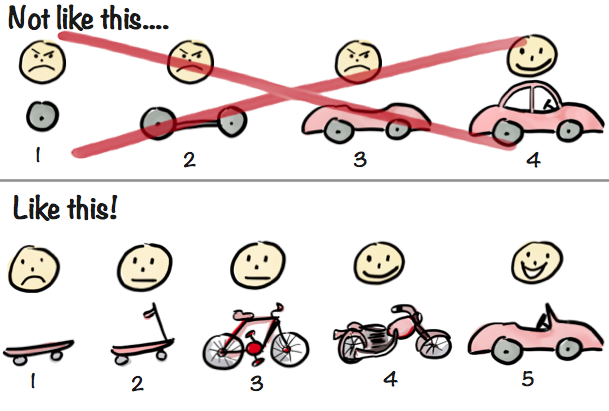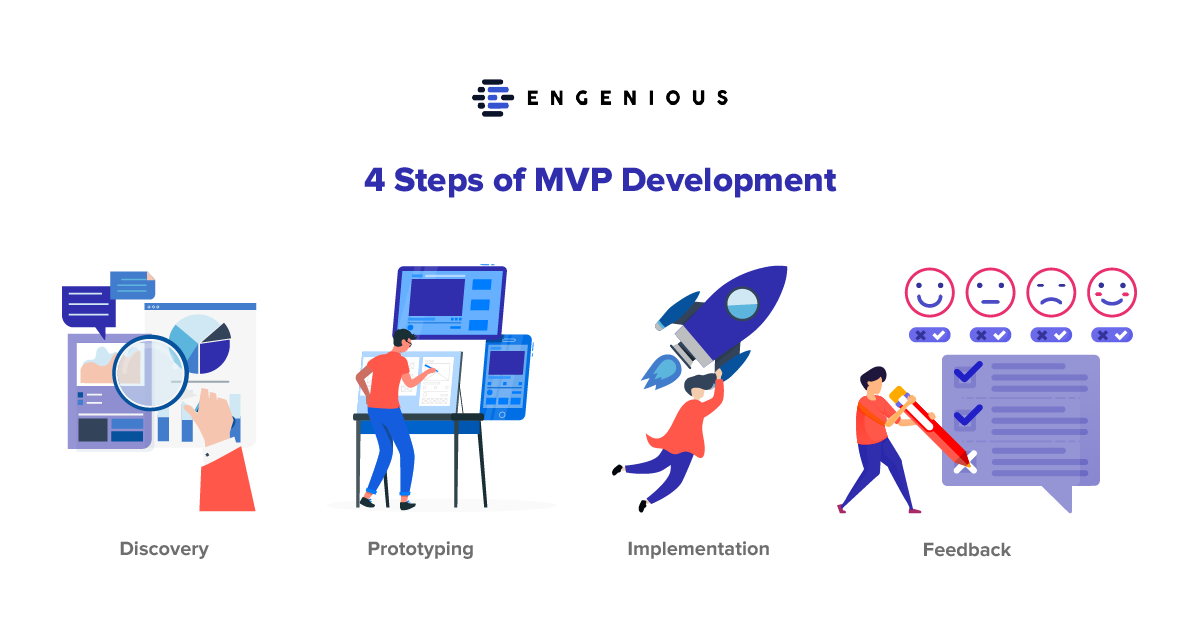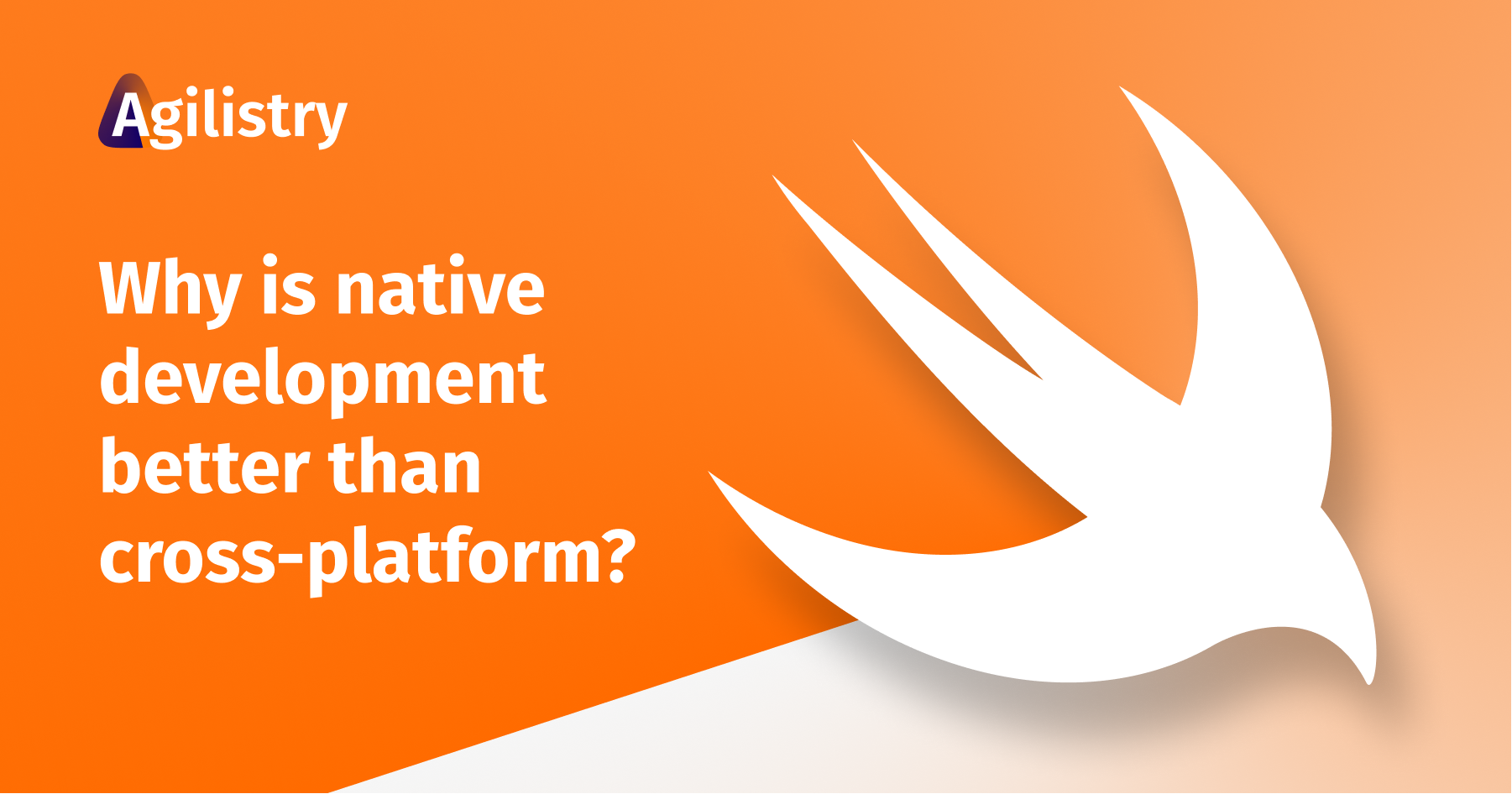How to Build an MVP App in 3 Months
Once you decide to build a mobile application, what should come next in your plan is to test the solution the software intends to bring to its users. This is where Minimum Viable Product (MVP) comes into play. In this article, we’ll be looking at how to build the perfect iOS MVP app for your software in three months.
Let’s say you have a software idea you want to bring to reality. During the initial stage, you might not know whether the software will be a success or a flop. You can only guess, or better still, build the whole software application and release it into the market to check for its success level.
Launching an app without testing it first with the market takes not only time and energy but also money and other unavoidable resources. And we all would like to have a close shave when it comes to investing our hard-earned money. What if the app doesn’t do as well as we want it to? All our efforts could become wasted. And we might have to start from the beginning or abandon the idea altogether.
Thankfully, there’s something called MVP to make everything easier. With MVP, you build a test version of your app and check how the public reacts to it. Once you’ve gathered as much feedback as possible, you can decide whether to release the full/final product based on the response received.
What Is MVP?
An MVP (short for Minimum Viable Product) is a software development technique in which a software/product/application version is launched with minimal and lesser features than the planned full version. This basic iteration of the app will contain essential elements and functionalities enough to gather needed feedback from target users.
An MVP works for not only apps and software but also other designs such as cars, televisions, and websites. For example, web development companies use the minimum viable product (MVP) technique to get prospective consumers’ responses to a particular design and its elements.
After much user testing, the web administrators can be sure of what to remove or include in the final design and user interface.
Why Do You Need an MVP?
There are many reasons why you need an MVP. We discuss below a few of the benefits of using the MVP approach.
Idea Validation
We guess you already have an idea before you start creating a software application or any other product. The purpose of releasing a basic iteration of a mobile app is to validate your idea.
We’ve seen many product developers being overly excited about an idea forgetting that intended users may not share the same sentiments. You need something that will let you know your target audience will buy your idea. And it would be best if you could find a cheap technique to determine that.
By developing a minimum viable product, you can test your idea with minimum features, which would take fewer resources and less time to build. This way, you can invest your time, knowledge, and resources on only the vital part of the product.
Like the MVP Pyramid Model from Jussi Pasanen: Build a slice across instead of one layer at a time.
Shorter Time to Market
It doesn’t take much time to develop an MVP, so you can quickly market the product as soon as it drops. Creating a polished, ready-to-use app requires lots of time, money, and resources. But the MVP strategy helps bypass all time-consuming elements and bring out the app faster for the world to see.
Rapid MVP development also has the edge over the traditional product development method when it comes to gaining users and customers fast. Though consumers are yet to have the full app version, MVP allows them to interact with your first app iteration and increases the chances of these early testers using the full version.

Reduced Risks
Many popular and most used apps today started small and evolved with time. Apps such as Facebook, Snapchat, Airbnb, Spotify, Instagram, Dropbox, and Uber started as minimum viable products.
Why do you think the app developer went the MVP route? Because it is better to start small and gradually introduce the new features than wait until the product is wholly developed (which is practically impossible) before launching.
MVP of a product reduces most of the common software development risks and allows for future improvement. There’s always, for example, another company/developer who can release the same app or something better before you do. Therefore, it is better to reduce the risk of wasting money on a futile app by releasing an MVP first to see how early adopters react to the MVP product.
Henrik Kniberg had introduced his vision of MVP, which appeared to be an apt descreption to what should be released – Earliest Testable Product:

Relatively Small Investments
With a minimum viable product version, you’re investing less than building a complete app.
You can better spend the huge development budget for a complete app build on other areas such as customer acquisition, marketing, and customer development. You can even reach the break-even point faster when you handle all the product’s crucial parts.
4 Steps of MVP Development
The Discovery Phase
As the name suggests, the discovery phase aims to help your business discover many ideas that will contribute in one way or another to kickstarting your MVP idea. Here, a discovery team, including a Chief Technical Officer, Business Analyst/Project Manager, Solution Architect, and UX/UI Designer, work together for about 2-10 weeks to define a problem statement.
Before developing, the discovery team zeros in on the problem the app intends to solve. The team also checks if the problem even exists in the first place. Below are other things to handle during the problem discovery stage of development.
- Create customer personas: A customer persona is more like a fictional character created by the team to describe an ideal customer. One thing that makes the MVP special is that it doesn’t need to cover all personas and their needs. Once you start targeting too many users, you may not launch anything.
- Conduct market research: Adequate research is essential before launching any product. Research includes studying competitors and calculating market size.
- Create an architectural description of a specific solution based on established processes and excellent practices.
Other information gathered in this phase includes user stories, wireframes, UX mock-up designs, and a roadmap and backlog for the MVP development.
The discovery phase lasts as long as it takes to develop the product idea. But it is best to focus well on this stage as it affects the project’s overall outcome.
The Prototyping Phase
In the prototype phase, you are to build the product prototype. You may be wondering, “why do I need to build a prototype of an MVP?” A prototype is still required for a minimum viable product version as both are different.
Building an MVP prototype means making a less refined form of the actual MVP product. It can be a simple sketch on paper or a basic app with restricted interactions. This phase may last for 2 to 4 weeks.
A prototype helps to:
- Validate UI and UX and assist in getting the feedback that can be implemented when developing the MVP.
- Prove the accuracy of everything obtained from the discovery phase.
- Gather initial feedback from all stakeholders and focus groups who provide their thoughts on the possible improvement of the product when developing the MVP
Implementation Phase
This phase encompasses all it takes to develop the minimum viable product. Updates can be made once the feedback is gathered from the prototype phase, and the MVP development can begin.
Depending on the MVP scope, this phase can take 6-to 12 weeks. The result of this phase should be a well-developed MVP ready to be used for user acceptance testing. This helps to discover and fix, early on, the potential friction points.
Release and Post-launch Support
Here, the stakeholders perform a user acceptance test to verify the MVP and determine if it will be acceptable to the target users. If issues are found, the teams fix them and prepare for the product release.
As time goes on, there will be feedback from the users, which will be used to develop the remaining features of the app. Keep in mind that, unlike a prototype or demo, the MVP must have all the necessary elements and features to satisfy its users.

How Long Should the MVP Software Development Take?
Are you wondering, “how long does it take to build an MVP?” We would say it should not take more than 3-4 months. Many factors, however, can influence the duration of an MVP mobile app development.
We discuss below some requirements for developing an MVP app.
The Scope of Work That Has to Be Done
The more work required to complete a project, the longer it might take. To develop a mobile app, you have to consider how far you’ve gone with the product idea.
To ensure you’ll complete the MVP iOS app on time after starting, ensure elements such as UX/UI, competitors’ strategy, and user stories are in place.
If your iOS app idea is unclear and vague, it will take a long time to complete the project. The point here is you can’t determine the duration of your MVP creation until you’ve got all these elements listed above handled.
The Technology Stack
Your technology stack is a list of all the programs and frameworks needed to build the software application. Choosing the right tech stack for your project is essential because it directly affects its duration, quality of user feedback, and the product’s overall performance.
Many start-ups and companies do not know the technologies to use and what to look out for, so they fail even before they begin. To avoid this, here’s a list of what to note before choosing a tech stack:
- Ensure the technology functions well according to what you want to see in your MVP.
- The technology should not be overly costly. Remember, the primary purpose of building an MVP is cost-effectiveness. So the technology used should reflect that.
- The technology chosen should allow for scalability when it is time to build the final product. It should allow for making changes with ease and speed.
The Teams Availability
When you’re surrounded by team members ready to make things work, you can be sure to have a smooth and quick project. Anything other than this is problematic and will slow down development.
Also, having all necessary team members available for the MVP, the faster the development becomes.
The Degree of Customer Involvement
The main purpose of an MVP is to receive customers’ feedback and discover loopholes that need to be worked on. An MVP allows customers to use the product first and provide feedback.
Unfortunately, many developers build the MVP as an end itself, giving less chance for customer involvement in the process. It often leads to wasted time and resources, affecting iOS software development.
Dedication to the Project
It is one thing to have a complete team, but an entirely different thing to have team members who are dedicated to the project and want its success.
Once everyone in the team wants the minimum viable product to come out well and nicely, they’ll work hand in hand to make it happen. There won’t be any slowdown, and things will go as planned.
Possible Blocks in MVP Creation
Creating an MVP can sometimes be hindered by even the small things ignored just because they seem irrelevant. These details include:
A Team Without Enough Experience
Having a team without the necessary experience can result in many issues like choosing the wrong technology stack, drawing the wrong roadmap, and setting up the whole project for failure.
To hire the right team:
- Get a technology expert to help evaluate the expertise of any team members and technology vendor you’re hiring.
- Do not rely too much on CVs or testimonials brought to secure the job. Satisfied customers will help you know better than what is written.
- Check for their technical background for any team member you want to hire.
Poorly Managed MVP Scope
Don’t forget that the primary purpose of creating an MVP is to provide the users with an experience of the core features of an app before launching the final product. That is the main scope of an MVP. Anything beyond is a sure path to exceeding the budget of money and resources.
Lack of Information and Material to Start up the MVP Development
90% of start-ups in the mobile development niche fail. This likelihood of failure becomes even higher when the resources required to start and finish the MVP development are lacking. It’s like building a house without cement, sand, wood, or gravel.
It is crucial to thoroughly go through the discovery phase to avoid failure even before beginning. After this phase, the prototype phase should come next, followed by implementation before the actual launch. Skipping any of these stages can do great harm to the entire process.
Low Qualification of Founder to Guide the MVP Development
A leader without direction is sure to lead the followers astray. The start-up founder should not just be an observer of the development process. They should be able to guide the team on where to go and how to get there.
Although, it’s not necessary to have the whole thing figured out beforehand. However, the project manager or team leader having the needed is vital for the project’s success.
Ways to Increase Speed
Some Pieces of the Puzzle Are Prepared in Advance
Before contacting a developer, it helps to have crucial parts already figured out. This lessens the work on the developer’s side and speeds things up.
You can have a ready-made design for the developer to follow, an overview of your target audience, information on competitors, etc. With these, the discovery phase will be easier and quicker.
In-Depth Discovery and Expertise
On the software developer side, having in-depth knowledge of the product’s niche will speed up the entire process. Here at Ingenious, for example, we have years of experience in the mortgage industry. So we can guarantee our customers faster MVP and full software development in that industry.
Hiring a developer with prior knowledge about your business is one way to ensure a smooth and fast job.
Prioritization
Prioritizing your MVP features shouldn’t be done based on intuition. It needs deep research to cover the urgent needs of your software users.
Prioritizing features helps you discover and identify the functionalities you need to focus on squarely and work on immediately. This will reduce the time to release the MVP to the market, as the job will be done faster and with a clear direction.
Correct Product Owner
As a product owner, developing the MVP would be faster if you’re experienced in the niche and know the inside-out of the business. You’ll be able to focus on the right tasks and work hand-in-hand with the team to make the project successful.
Trust in the Team
A project without trust amongst everyone involved is already set for complications. As a product owner, trusting the team means trusting their judgment on your project and believing in their abilities. Without this little ingredient, there will surely be downsides to the project’s progress and speed.
Conclusion
To build an iOS MVP in three months, you need to consider quite a number of requirements. Above all, it is most important and helpful to work with the right iOS developing team to make all your work easier. That is where we at Agilistry come in.
Partner with us if you need the perfect team for your start-up to build an MVP in three months or less! Contact us now to book a short demo. You can also review our previous cases and services to confirm our expertise.
If you enjoyed this article, please share it with someone who may also find it helpful.


